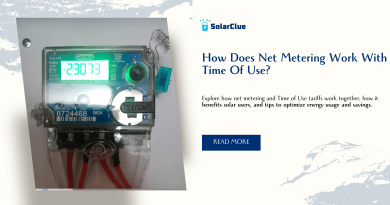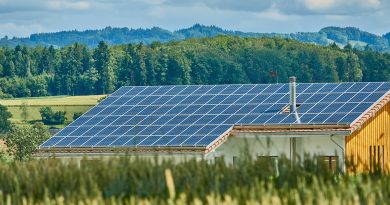How To Measure Short Circuit Current Of A Solar Panel?
Measuring the short-circuit current (Isc) of a solar panel is a fundamental step in evaluating its performance and understanding its output capacity. This guide will explain the importance of Isc, provide detailed instructions on how to measure it, and discuss the factors that can influence Isc readings.
Table of Contents
- 0.1 The Significance of Short-Circuit Current in Solar Panel Evaluation
- 0.2 Understanding the Concept of Short-Circuit Current
- 0.3 The Equipment Needed for Measuring Isc
- 0.4 Step-by-Step Instructions for Measuring Isc
- 0.5 Safety Precautions and Potential Hazards
- 0.6 Factors Affecting Short-Circuit Current
- 0.7 The Impact of Shading and Dirt on Isc
- 0.8 Using Isc Data to Calculate Solar Panel Output
- 0.9 Comparing Isc Values of Different Solar Panels
- 0.10 Troubleshooting Common Issues with Isc Measurements
- 1 Frequently Asked Questions (FAQs)
The Significance of Short-Circuit Current in Solar Panel Evaluation
The short-circuit current (Isc) is a key parameter that represents the maximum current a solar panel can produce when the output terminals are shorted. Isc is critical for:
- Assessing Panel Health: Regularly measuring Isc helps in monitoring the performance and condition of solar panels.
- System Design: Understanding Isc is essential for designing solar power systems, particularly in choosing the right inverters and wiring.
- Performance Evaluation: Isc, along with other parameters like open-circuit voltage (Voc), helps in determining the overall efficiency of a solar panel.
Understanding the Concept of Short-Circuit Current
Isc occurs when the positive and negative terminals of a solar panel are directly connected with no resistance in the circuit, allowing maximum current to flow. It is measured in amperes (A) and is influenced by factors like sunlight intensity and temperature.
The Equipment Needed for Measuring Isc
To measure Isc, you will need the following equipment:
| Equipment | Purpose |
|---|---|
| Multimeter | To measure the current flowing through the circuit. |
| Clamps | To securely connect the multimeter leads to the solar panel terminals. |
| Protective Gear | Safety gloves and glasses to protect against electric shock. |
Step-by-Step Instructions for Measuring Isc
Follow these steps to accurately measure the short-circuit current of a solar panel:
- Select a Sunny Day: Ensure you are measuring Isc on a bright, sunny day to get the most accurate reading.
- Set Up the Multimeter: Turn on the multimeter and set it to measure current (Amps). Ensure it is set to the appropriate range, typically higher than the expected Isc value.
- Connect the Multimeter Leads: Attach the multimeter leads to the positive and negative terminals of the solar panel. Ensure the connections are secure.
- Measure the Current: With the multimeter connected, the current displayed on the screen is the Isc of the panel. Note the reading.
- Disconnect Safely: Once the measurement is taken, carefully disconnect the multimeter leads to avoid any short circuits or electrical shocks.
Safety Precautions and Potential Hazards
Working with solar panels involves handling electricity, so safety precautions are essential:
- Turn Off the System: If the panel is part of a larger system, ensure the system is turned off before taking measurements.
- Wear Protective Gear: Use insulated gloves and safety glasses to protect against potential electric shocks.
- Avoid Wet Conditions: Never attempt to measure Isc in wet conditions, as water can conduct electricity and increase the risk of shock.
- Be Aware of High Currents: Solar panels can produce significant current, so handle connections carefully to avoid short circuits.
Factors Affecting Short-Circuit Current
Several factors can influence the Isc of a solar panel:
| Factor | Impact on Isc |
|---|---|
| Sunlight Intensity | Higher sunlight increases Isc, while lower sunlight decreases it. |
| Temperature | Higher temperatures can reduce Isc, while lower temperatures can increase it slightly. |
| Panel Condition | Dirt, dust, and damage can reduce Isc by blocking sunlight or impairing the panel’s function. |
| Shading | Even partial shading can significantly reduce the Isc of a solar panel. |
The Impact of Shading and Dirt on Isc
Shading and dirt can have a considerable impact on Isc:
- Shading: Even small shadows can cause a significant drop in current output, as solar cells are often wired in series.
- Dirt and Debris: Accumulated dirt can block sunlight and reduce the efficiency of the solar cells, leading to lower Isc readings.
Using Isc Data to Calculate Solar Panel Output
Isc data is vital for estimating the potential output of a solar panel:
- Calculating Maximum Power (Pmax): Use Isc along with Voc (open-circuit voltage) to calculate the maximum power output (Pmax) using the formula: Pmax=Isc×Voc×Fill Factor\text{Pmax} = \text{Isc} \times \text{Voc} \times \text{Fill Factor}Pmax=Isc×Voc×Fill Factor
- System Sizing: Isc helps in determining the size of the solar panel array needed to meet energy demands.
Comparing Isc Values of Different Solar Panels
Comparing the Isc values of different solar panels can help in selecting the most efficient and suitable panels for your system:
- Efficiency Comparison: Panels with higher Isc values under the same conditions are typically more efficient.
- Brand and Model Selection: Use Isc values to compare different brands and models, keeping in mind other factors like Voc and temperature coefficients.
Troubleshooting Common Issues with Isc Measurements
Common issues you might encounter when measuring Isc include:
- Inaccurate Readings: Ensure the multimeter is correctly set and the connections are secure. Double-check the range setting on the multimeter.
- Fluctuating Values: If the current reading fluctuates, it could be due to varying sunlight conditions or loose connections.
- No Current Flow: If the multimeter shows zero current, check for faulty connections or ensure the panel is exposed to sunlight.
Frequently Asked Questions (FAQs)
Q1: Why is measuring the short-circuit current (Isc) important?
A1: Isc is crucial for assessing the health and performance of a solar panel, helping in system design and ensuring maximum efficiency.
Q2: What equipment do I need to measure Isc?
A2: You need a multimeter, clamps, and protective gear to measure the short-circuit current of a solar panel.
Q3: How does sunlight intensity affect Isc?
A3: Sunlight intensity directly impacts Isc; higher sunlight increases Isc, while lower sunlight decreases it.
Q4: Can I measure Isc on a cloudy day?
A4: It’s best to measure Isc on a sunny day to get the most accurate reading, as cloud cover can reduce sunlight intensity and lead to lower readings.
Q5: What safety precautions should I take when measuring Isc?
A5: Ensure the system is turned off, wear protective gear, avoid wet conditions, and handle connections carefully to prevent electric shock.
Q6: How do shading and dirt affect Isc?
A6: Shading and dirt can significantly reduce Isc by blocking sunlight and impairing the panel’s ability to produce current.
Q7: How can I use Isc data to estimate solar panel output?
A7: Use Isc, along with Voc and the panel’s fill factor, to calculate the maximum power output and design the system accordingly.
Q8: What should I do if I get inconsistent Isc readings?
A8: Check the multimeter settings, ensure stable sunlight conditions, and verify all connections are secure to avoid inaccurate measurements.
Measuring the short-circuit current (Isc) of a solar panel is an essential skill for anyone involved in solar energy. By following the correct procedures and understanding the factors that influence Isc, you can ensure your solar panels are performing optimally and make informed decisions about your solar power system.


